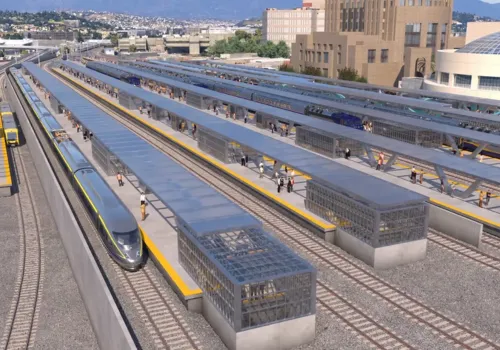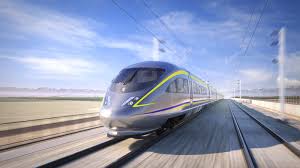
California’s ambitious high-speed rail project, long envisioned as a transformative transportation system connecting the state's major cities, is now at a pivotal crossroads. The potential loss of $4 billion in federal funding threatens not only its momentum but possibly its very future.
The U.S. Department of Transportation has delivered a major blow to the project, as the Federal Railroad Administration (FRA) warned it may revoke previously approved federal grants. In a June 4 letter, the FRA gave the California High-Speed Rail Authority (CHSRA) just 37 days to respond to scathing findings from a 300-page compliance report. The report highlights significant management issues and questions whether the project can meet its funding and construction goals.

Citing a February review from California’s Office of the Inspector General, the FRA raised red flags about a $6.5 billion funding gap required to complete the 171-mile Central Valley segment connecting Bakersfield to Merced. The OIG’s report expressed strong doubts, stating it is “increasingly unlikely” the authority will complete the stretch by its current target of 2033.
The FRA’s letter did not hold back: it stated the agency is “convinced CHSRA has no credible plan to address this funding gap” and pointed to a “pattern of broken promises” stretching back to the project’s inception. Initially pitched as an 800-mile high-speed rail network linking San Francisco and Southern California by 2030, the plan has since been scaled back dramatically. The current goal is to begin partial service in the Central Valley by 2030–2033, at a projected cost of up to $35 billion.
In a sharply worded statement, the FRA concluded that the authority's inability to deliver the Central Valley line within budget and on schedule amounts to a contractual default under their funding agreement. “The FRA … has no confidence the authority will ever deliver an operating high-speed rail system,” the agency wrote.
The rail authority pushed back hard against the FRA’s assessment. “The Authority strongly disagrees with the FRA’s conclusions, which are misguided and do not reflect the substantial progress made to deliver high-speed rail in California,” a CHSRA spokesperson said in an email. “We remain firmly committed to completing the nation’s first true high-speed rail system connecting the major population centers in the state.”
The spokesperson also emphasized that state funding has been the primary driver of the project to date. That includes $4.2 billion from a 2008 voter-approved bond and revenues from California’s emissions cap-and-trade program. Governor Gavin Newsom, a Democrat, has proposed increasing that commitment. His revised Fiscal Year 2026 budget earmarks $1 billion annually from the cap-and-trade funds for the project.
Still, many observers remain skeptical that the state can close the financial gap, let alone expand the project beyond the Central Valley.
“I don’t think there is support from the state government to pick up the rest,” said Baruch Feigenbaum, senior managing director of transportation policy at the Reason Foundation, a libertarian think tank. “I don’t believe, given what the political situation is in Sacramento right now, there is another path forward.”
Feigenbaum is also doubtful about attracting private-sector backing. “Because of its cost, there’s just no way that the private sector could make money on it,” he said. “It’s just not feasible.”
Others, however, believe the project is still worth fighting for. Rick Harnish, executive director of the High Speed Rail Alliance, said the key lies in stronger political will. He urged state lawmakers to act boldly. “Stop futzing around and figure out how to make it happen,” he said. Harnish called for renewed commitment from the legislature to preserve federal support and ramp up construction beyond the initial phase.
Public sentiment may still be on the project's side. A UC Berkeley–Politico poll released in April showed 67% of registered California voters support continuing the high-speed rail effort, despite delays and escalating costs.
“California voters are tired of traffic jams and airport delays,” said Andy Kunz, president and CEO of the U.S. High Speed Rail Association, in a written statement. “Support for the California High-Speed Rail project is growing as the state’s transportation system continues to grind to a halt.”
Despite growing scrutiny, the California High-Speed Rail Authority appears unwilling to back down. “The Authority will fully address and correct the record in our formal response to the FRA’s notice,” the spokesperson said.
Whether that response will satisfy federal officials and preserve the $4 billion in funding remains to be seen. For now, the high-speed rail project teeters between promise and peril — a symbol of California’s high-tech aspirations and the realities of megaproject execution.
Originally reported by Dan Zukowski in Construction Dive.